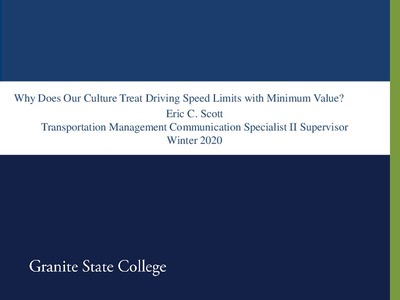| dc.description | The primary purpose of this study is for the New Hampshire Department of Transportation, the Transportation System Management Operations Center, and the New Hampshire Department of Safety to shed light on why drivers speed. A secondary purpose is for these agencies to recognize the possible origins of the perceived culture of speed/speeding on highways in New Hampshire and to develop strategies to shift the culture to one which respects reasonable, safe speeds, with respect for posted speed limits.
These research findings indicate that states using speed limit messaging signs as part of public awareness for drivers helps reduce speeding. Additional results are that 85 percent of travelers drive at the posted speed limits or lower, while 15 percent of traveler’s speed above the posted speed limits. | |


